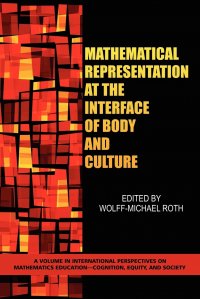A Volume in International Perspectives on Mathematics Education - Cognition, Equity & SocietySeries Editor Bharath Sriraman, The University of Montana and Lyn English, Queensland University of TechnologyOver the past two decades, the theoretical interests of mathematics educators have changed substantially-as any brief look at the titles and abstracts ofarticles shows. Largely through the work of Paul Cobb and his various collaborators, mathematics educators came to be attuned to the intricaterelationship between individual and the social configuration of which she or he is part. That is, this body of work, running alongside more traditionalconstructivist and psychological approaches, showed that what happens at the collective level in a classroom both constrains and affords opportunitiesfor what individuals do (their practices). Increasingly, researchers focused on the mediational role of sociomathematical norms and how these emergedfrom the enacted lessons.A second major shift in mathematical theorizing occurred during the past decade: there is an increasing focus on the embodied and bodilymanifestation of mathematical knowing (e.g., Lakoff & Núñez, 2000). Mathematics educators now working from this perspective have come to theirposition from quite different bodies of literatures: for some, linguistic concerns and mathematics as material praxis lay at the origin for their concerns;others came to their position through the literature on the situated nature of cognition; and yet another line of thinking emerged from the work onembodiment that Humberto Maturana and Francisco Varela advanced. Whatever the historical origins of their thinking, mathematics educators takingan embodiment perspective presuppose that it is of little use to think of mathematical knowing in terms of transcendental concepts somehow recordedin the brain, but rather, that we need to conceptual knowing as mediated by the human body, which, because of its senses, is at the origin of sense.One of the question seldom asked is how the two perspectives, one that focuses on the bodily, embodied nature of mathematical cognition and theother that focuses on its social nature, can be thought together. This edited volume situates itself at the intersection of theoretical and focal concerns ofboth of these lines of work. In all chapters, the current culture both at the classroom and at the societal level comes to be expressed and providesopportunities for expressing oneself in particular ways; and these expressions always are bodily expressions of body-minds. As a collective, thechapters focus on mathematical knowledge as an aspect or attribute of mathematical performance; that is, mathematical knowing is in the doing ratherthan attributable to some mental substrate structured in particular ... Это и многое другое вы найдете в книге Mathematical Representation at the Interface of Body and Culture (PB) (Wolff-Michael Roth)
Mathematical Representation at the Interface of Body and Culture (PB) Wolff-Michael Roth
Подробная информация о книге «Mathematical Representation at the Interface of Body and Culture (PB) Wolff-Michael Roth». Сайт не предоставляет возможности читать онлайн или скачать бесплатно книгу «Mathematical Representation at the Interface of Body and Culture (PB) Wolff-Michael Roth»
